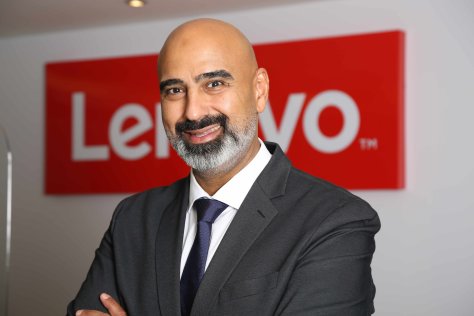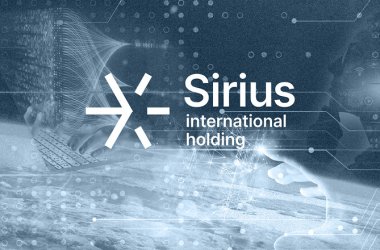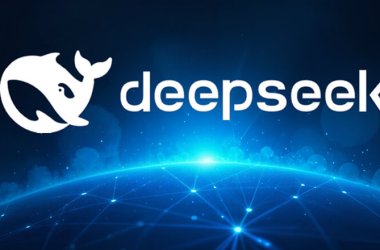
Lenovo has revealed top trends that will shape the future of high-performance computing (HPC). As the technology enters a new era, there is an increasing need for efficient HPC, that is more readily available, and can offer ‘partnerships’ for artificial intelligence (AI) projects.
The three key trends that have been identified include exascale computing – which is driving high-performance computing to a new threshold of performance and power efficiency, artificial intelligence – which is converging with HPC to unlock some of the toughest problems facing humanity, and HPCaaS (High-Performance Computing as a Service), which is opening up HPC to a new audience.
Commenting on the trends, Alaa Bawab, Lenovo General Manager Middle East and Africa said: “The trends are going to define the potential of HPC through this decade and beyond. When it comes to the biggest problems facing humanity, from disease to climate change to weather prediction, HPC is working hand-in-hand with AI to provide solutions. HPC is rapidly evolving, with exascale computing technologies providing new breakthroughs which will empower the discoveries of the future – and ‘as a service’ models mean that this empowering technology is available to more researchers than ever before”.
Why exascale computing matters
Exascale computing is the threshold of a quintillion calculations per second – that’s 1,000,000,000,000,000,000 per second. It has been widely hailed as heralding a new age in high-performance computing, allowing scientists to achieve ever greater insights, such as modelling the climate and understanding the human brain more efficiently than ever before.
Exascale computing focuses on efficiency, and how to squeeze the best possible performance at the very boundaries of the laws of physics. Similarly, with exascale computing, there are also huge challenges around energy use and sustainability around achieving that level of performance within the limits of the data centre. To be more sustainable, high-performance computing systems need to drive performance efficiently. This level of performance also requires efficient cooling systems for better reliability and performance. Lenovo uses Neptune warm water cooling at Lenovo which delivers more than 90% heat removal efficiency and expends 40% less power to cool a rack of servers than traditional air cooling.
Lenovo has a design philosophy described as ‘exascale to everyscale’, meaning the breakthroughs from exascale computing cascade down into other levels of high-performance computing. Most businesses don’t need an exascale system costing hundreds of millions – but can still extract value at petascale for example (a mere 1,000,000,000,000,000 calculations per second).
Why HPC is built for AI
When it comes to cutting-edge research, there is a convergence between artificial intelligence and HPC, and the two technologies work symbiotically a lot of the time. One of the main drivers for high-performance computing is training AI models, which has seen demand for compute power soar. There’s also a crossover where AI is deployed in a traditional HPC workflow to make the research more productive.
Powered by HPC, AI and machine learning (ML) are helping researchers to deal with some of the biggest problems humanity faces. From discovering ways to feed the global population in the coming decades to diagnosing sight-threatening retinal disorders, HPC systems are offering universities and global companies the computing horsepower to drive cutting-edge AI and ML research.
Research powered by AI and HPC is solving the problem of reduced food yields caused by climate change. Food crop yields are already falling – and global food production will have to increase by 50% to keep up with increasing demand as populations grow.
The end result is that humanity needs new, more efficient ways to grow food. HPC will be central to solving this problem, using powerful, efficient computing infrastructure aligned with AI to crunch enormous amounts of data harvested from sources such as satellite imagery, weather reports, and even sensors in fields.
In medicine, artificial intelligence, powered by HPC could open up a whole new way of treating illness, with AI delivering the insights required to tailor treatments genetically to each individual patient. ‘Personalised medicine’ is predicted to reshape the way we treat illness, but unlocking its potential requires an enormous amount of computing power.
Lenovo’s Genomics Optimisation and Scalability Tool (GOAST), which relies on HPC, has accelerated the process of sequencing a human genome from more than 150 hours to just 18 minutes, bringing the dawn of personalised medicine within reach.
More convenient ways to consume
Just as in most other areas of computing, ‘as a service’ models are changing the way HPC is consumed and making it more accessible to researchers around the world.
Cloud-based high-performance computing is the fastest-growing area of high-performance computing, allowing organisations to rapidly add additional capacity. The ‘as a service’ model is growing faster than any other, with 15% of the market already in the cloud.
With HPCaaS customers can pay monthly with very minimal capital investment, reducing total cost by eliminating over-provisioning. Customers can get the best and newest tech in high-performance computing, refreshing it when it becomes obsolete. When it comes to adding more power, all customers have to do is ask.





